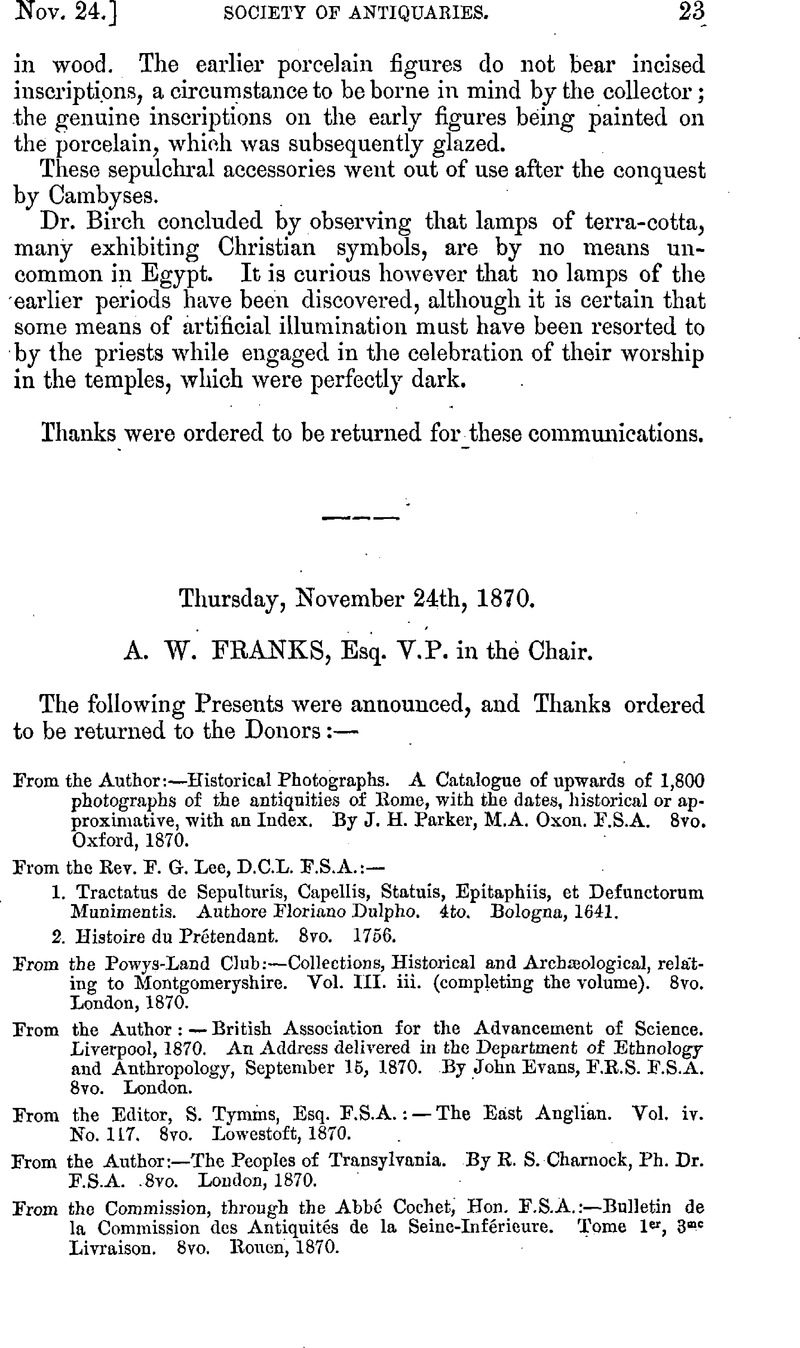No CrossRef data available.
Published online by Cambridge University Press: 10 May 2010

page 25 note * Journ. Archæol. Assoc. ii. 185.
page 27 note * In the Statutes of John Peccham, Archbishop of Canterbury, given in Wilkins, ii. 49, the same provision is required; the words are “lanterua cum tintinnabulo, campanie in campanili, ot cordæ ad easdem.“
page 27 note † Lyndwode. Do Ecclesiis cdificandis, c. Ut Parocliiani, p. 251, Oxford Edition.
page 27 note ‡ De Celebratione Missarum, c. Altissimus, p. 231.
page 27 note § Inventories of Goods, & c, in Churches of Surrey. Ed. J. K. Daniel-Tyssen, F.S.A. 1869. Reprinted from Surrey Archieological Collections, vol. iv.
page 28 note * Edited by Mr. Peacock for the Early English Text Society, 1868.
page 28 note † i. e. crosa themselves.
page 28 note ‡ See Sir John Cullum's Hawsted, p. 34. This bell is noticed in an inventory of 1637, as “one little bell, hanging.between the church and chancel.”
page 29 note * Whitaker's Richmondshire, ii. 295.
page 29 note † Archæologia, xliii. 232.
page 29 note † Synod. Exon. 1287, Wilkins, Conc. ii. 132. It may prove to be the fact that in process of time the ringing of the external bell was advanced from the moment of consecration to the commencement of the Tersanctus as a warning to persons outside the church to enter.
page 29 note § “A hand-bell is invariably used at funerals in Italy, Sicily, and Malta, and commonly so in France and Spain, as a signal to clear the way, and elicit a prayer for the departed.”— Walcott, Sacred Archaeology, p. 69.
page 29 note δ Surrey Inv. p. 19.
page 29 note ¶ Ibid. p. 65.
page 30 note * Lyndwode, De reliquiis, &. c. dignisshnum, ad verba lumine previo, p. 219
page 30 note † See Arehæological Journal, xiv. 87.